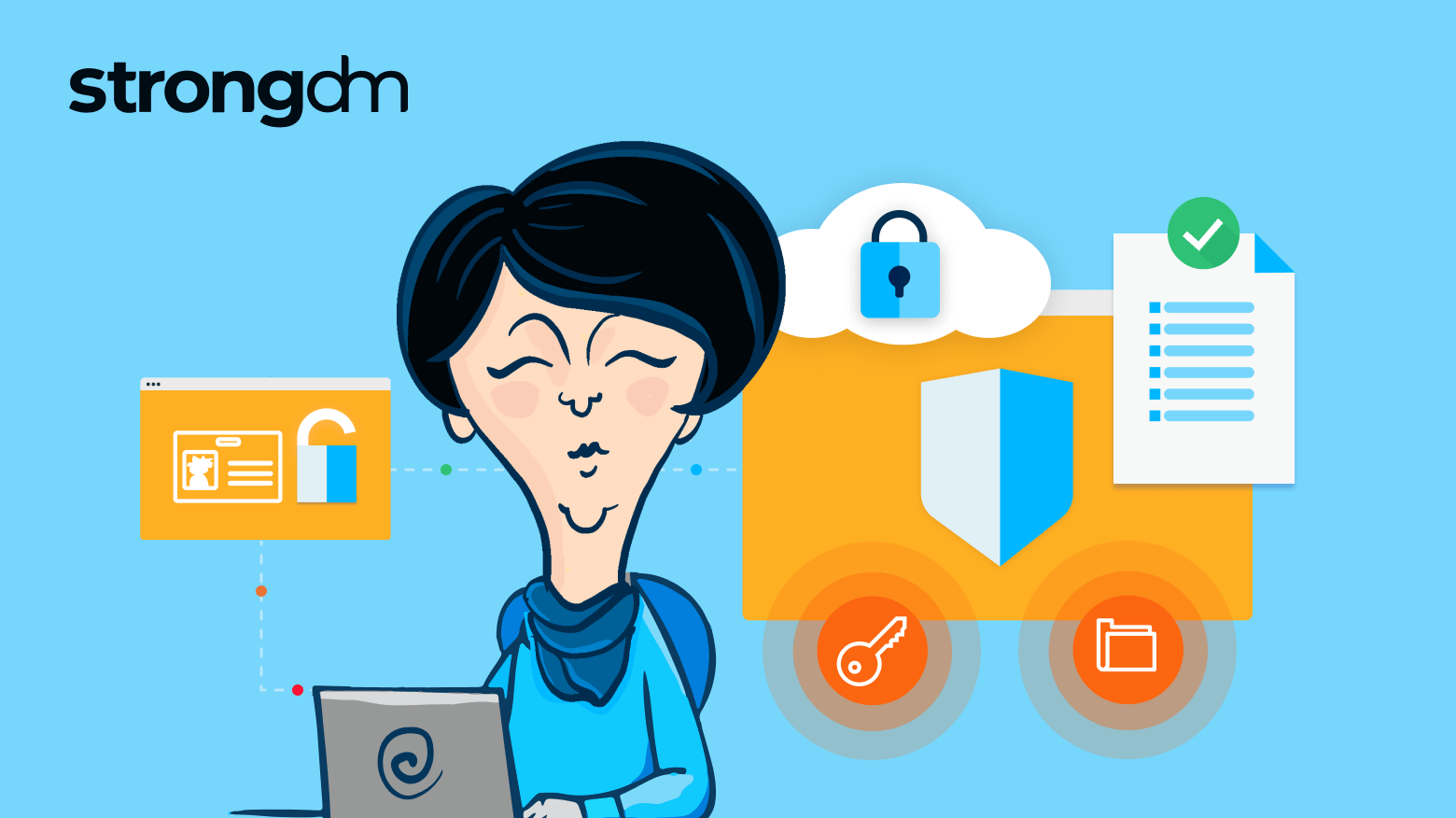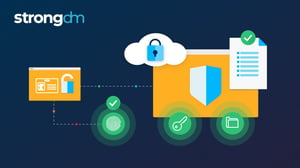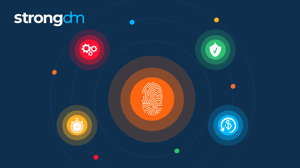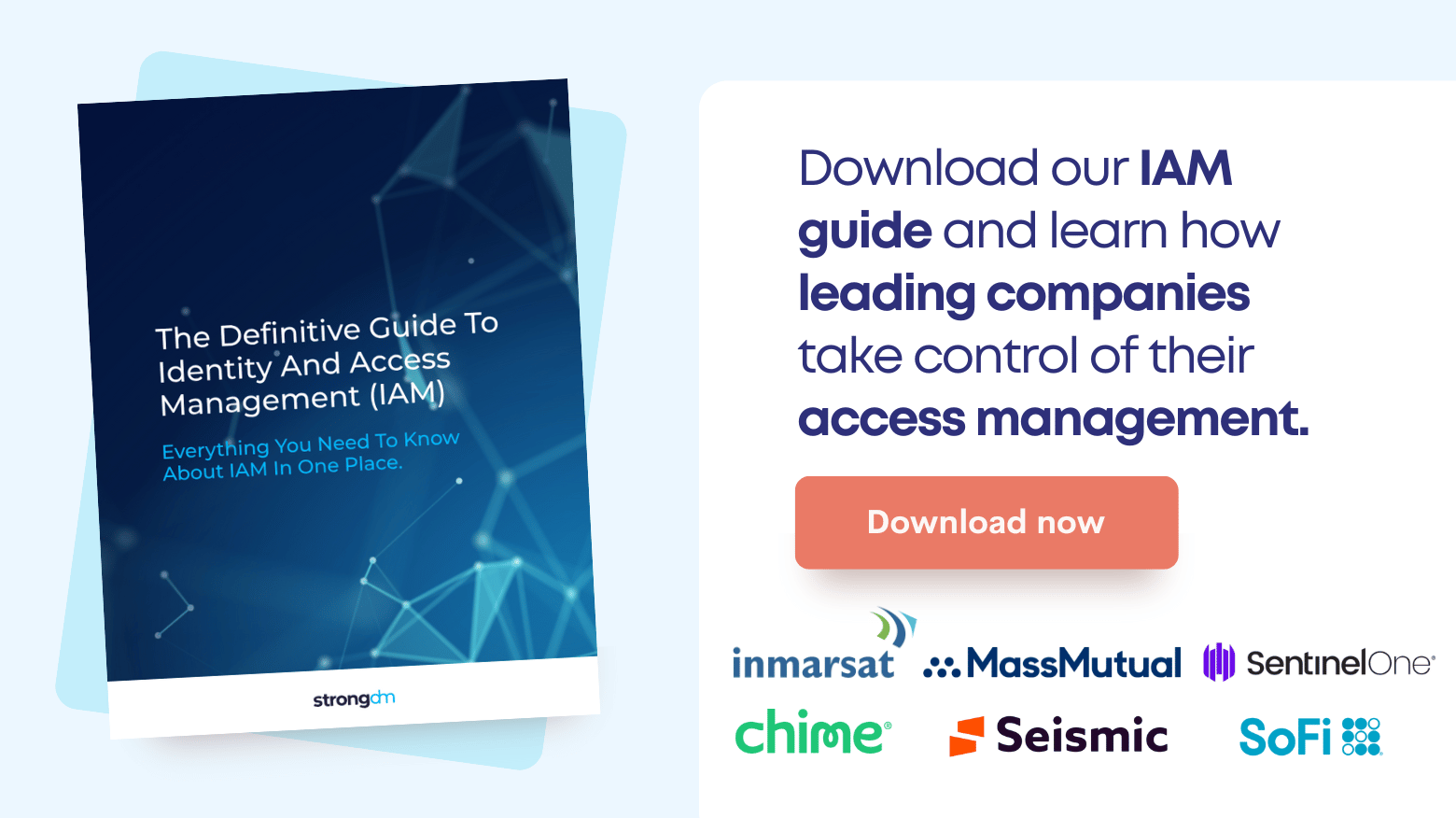Enterprise Identity and Access Management (IAM) Solutions


Written by
Schuyler BrownLast updated on:
October 17, 2025Reading time:
Contents
Built for Security. Loved by Devs.
- Free Trial — No Credit Card Needed
- Full Access to All Features
- Trusted by the Fortune 100, early startups, and everyone in between
Summary: Enterprises often have thousands of users to manage, and therefore unique requirements for their enterprise identity and access management software solutions. In this article, you’ll learn what enterprise IAM is and what to expect in a successful enterprise-wide IAM software implementation. By the end of this article, you’ll know the benefits and challenges of introducing enterprise IAM solutions in your organization.
What Is Enterprise Identity and Access Management (IAM)?
Enterprise identity and access management refers to the policies, processes, and tools organizations use to securely manage access to critical company resources and sensitive data for a large number of user identities.
Most enterprise organizations have extensive IT infrastructure with many applications, servers, databases, cloud environments, and more—all of which employees, vendors, and machine identities may need to access as part of their daily workflows. Large companies use enterprise identity and access management solutions to manage user permissions, reduce the risk of exposing user credentials, and monitor access patterns to detect and stop unauthorized access.
Enterprise identity services help companies verify user identities and provision access seamlessly using technologies like single sign-on, multi-factor authentication, and just-in-time access. To accomplish a zero-trust security environment, user identities are authenticated, and authorized access to resources every time a user requests access. Plus, IAM solutions help companies audit usage and maintain compliance or security requirements.
Benefits of Enterprise IAM
Even with a large IT team, it’s nearly impossible for enterprises to manually manage thousands of user identities and maintain the principle of least privilege. Manual access management often leads to IT bottlenecks as users wait to gain access to the resources needed for their work. Enterprise IAM solutions offer a way to safeguard critical company resources while automating identity and access management tasks and streamlining the user experience.
One of the most significant benefits of enterprise-wide IAM technology is enhanced security capabilities. Companies use IAM technology to reduce their attack surface by providing one way to securely access their resources. Plus, detailed logging and session monitoring offer IT teams deep insight into who accesses which resources and when they access them so teams can quickly detect a breach attempt.
Enterprises also benefit from IAM technology by:
- Saving on costs and preserving IT resources by automating tasks like onboarding and offboarding, streamlining access requests, and providing temporary heightened access as needed.
- Enhancing user productivity with single sign-on to all the resources a user has access to
- Saving time on compliance audits and reporting with comprehensive access logs
- Improving security by limiting who can access sensitive data and company resources
Challenges of Enterprise IAM
Despite the extensive benefits of implementing enterprise ID and access management technology, many organizations put off adopting an enterprise identity management system. Designing effective enterprise identity and access management policies and procedures that support a new IAM solution can be time-consuming, requiring a lot of upfront resources from IT teams and collaboration with other teams across the business.
One of the central challenges of implementing enterprise identity solutions is clearly defining the roles or attributes that will determine which users have access to which resources. If the company has managed access requests manually up until this point, they may not have formally defined who needs sustained access to particular resources, leading to excessively broad permissions or inconsistent access controls.
If an organization has a wide variety of tools and siloed directories, implementing enterprise-wide IAM capabilities can take a long time. Without proper buy-in and support from leaders across the organization, IAM technologies can become siloed and only support certain business functions, never being fully rolled out across the enterprise.
Examples of Successful Enterprise IAM Implementation
Most large enterprises have introduced some elements of enterprise identity management or access management solution within their organization. However, the challenge enterprises face is usually integrating disparate IAM solutions into a single identity and access management platform so they can maintain complete control and observability of user behavior across their IT infrastructure.
Olive
Olive—an AI and process automation solution supporting healthcare organizations—worked with StrongDM to successfully implement enterprise access management capabilities across their organization. By introducing StrongDM, Olive standardized their enterprise access control systems and streamlined auditing capabilities across their entire tech stack to maintain SOC 2, HIPAA, and ISO 27001 compliance with ease.
🕵 Learn more about how Olive successfully implement enterprise access management capabilities across their organization.
Braze
Similarly, the popular customer engagement platform Braze streamlined permissions management to manage access across over 10,000 databases and 1,500 servers. With StrongDM, Braze can easily gather evidence of every user identity change, permission adjustment, or query entered so they can demonstrate ongoing SOC 2, ISO 27001, and GDPR compliance.
🕵 Learn more about how Braze streamlined permissions management.
StrongDM: A Solution That Simplifies Enterprise IAM
Even with thousands of users, multiple databases, and tons of IT resources to manage, StrongDM makes enterprise identity access management simple and accessible. StrongDM’s Zero Trust PAM platform helps enterprise organizations like yours streamline authentication, authorization, networking, and observability across your entire IT infrastructure—all from one user-friendly identity and access management platform.
StrongDM integrates seamlessly with your existing tech stack—including other identity management tools like your SSO solution—to eliminate point solutions and manage access across all your databases, servers, Kubernetes clusters, applications, and more. Plus, StrongDM’s comprehensive platform offers full observability into access activity, simplifying monitoring and maintaining detailed query, web, and activity logs for easy reporting and auditing.
With StrongDM, your enterprise can easily automate access management tasks, saving time, money, and IT resources. Your organization can easily maintain consistent user permissions that align with your security policies and procedures across the entire company.
Enterprise IAM Is Within Reach with StrongDM
Enterprise IT teams have a lot to manage. From securing credentials and protecting their security perimeter to offboarding exiting employees and completing audits, IT resources are spread thin; without the proper support, some elements are bound to fall through the cracks.
With StrongDM, even large enterprises can easily automate and simplify identity and access management, allowing IT professionals to focus on what they do best: keeping your organization’s critical resources and sensitive data safe.
Make comprehensive enterprise identity and access management a reality in your enterprise. Try a 14-day trial of StrongDM today.
Next Steps
StrongDM unifies access management across databases, servers, clusters, and more—for IT, security, and DevOps teams.
- Learn how StrongDM works
- Book a personalized demo
- Start your free StrongDM trial

Categories:

About the Author
Schuyler Brown, Chairman of the Board, began working with startups as one of the first employees at Cross Commerce Media. Since then, he has worked at the venture capital firms DFJ Gotham and High Peaks Venture Partners. He is also the host of Founders@Fail and author of Inc.com's "Failing Forward" column, where he interviews veteran entrepreneurs about the bumps, bruises, and reality of life in the startup trenches. His leadership philosophy: be humble enough to realize you don’t know everything and curious enough to want to learn more. He holds a B.A. and M.B.A. from Columbia University. To contact Schuyler, visit him on LinkedIn.
You May Also Like





